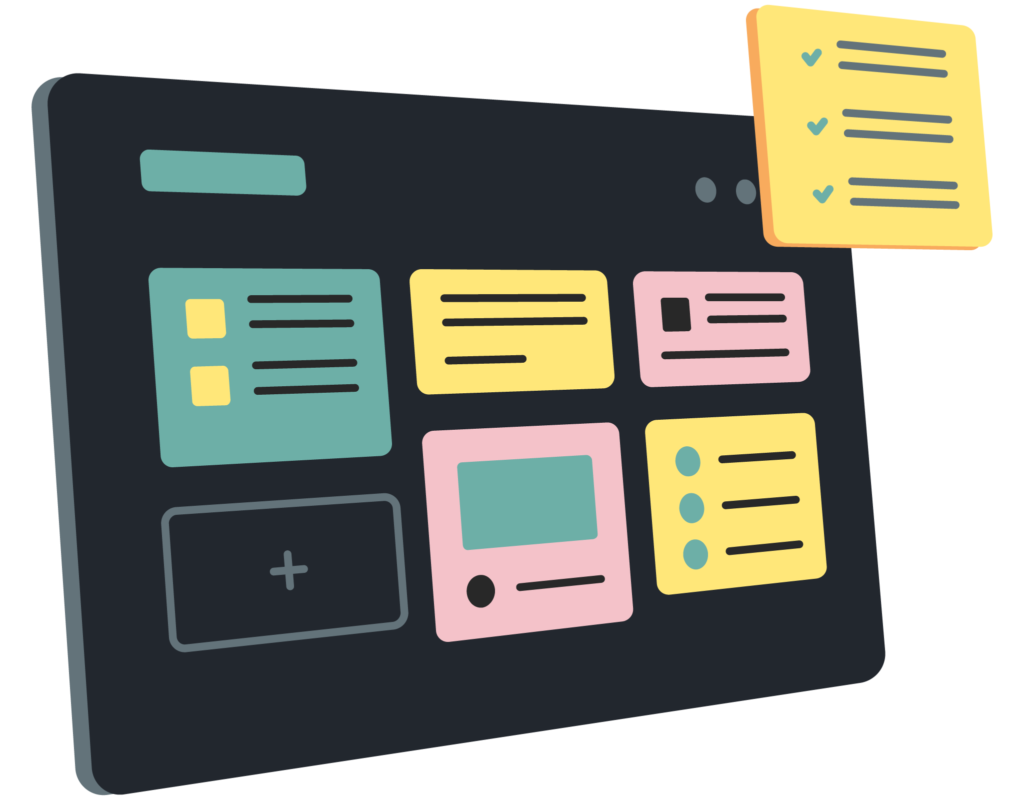
Website Translation Prices in 2023
Michail Strijov · Last Updated: 11 Jan 2023
With the rise of the internet and e-commerce, companies find it easier than ever to expand to foreign markets and sell products and services to customers overseas. Translating a website can be a crucial step in order to achieve just that and to grow your business simply by opening it up to more people. Having a translated website can also help to build trust with potential customers, as it shows that a business is making an effort to understand and accommodate the needs of an international audience. Add to that the user-friendly experience of opening a page and seeing it in your own language, and you have a significantly higher chance of reaching new visitors and converting them into paying customers.
1. How Much Does it Cost to Translate a Website?
You’ve probably come here looking for this exact answer, so here we go: it depends! A one-page website for a lawyer’s office due in a month or so will have a very different price tag than the website of an agricultural machinery manufacturer including documentation due ASAP. That being said, here are a few general guidelines (for one language pair):
Small Websites: $ 500–3,000
(up to ~20 pages, personal and small enterprise sites)
Medium Websites: $ 3,000–10,000
(20–100 pages, medium-sized businesses)
Large Websites: $ 10,000+
(100+ pages, corporate websites)
2. Direct and Indirect Translation Costs
Direct costs are are expenses that are directly related to professional website translation and localization services, for example:
- Cost of hiring translators, translation agencies, proofreaders and other language professionals to translate the website content
- Cost of tools or software used to manage the localization process, i. e. translation management software, computer-assisted translation software, plugins for your CMS for managing the translation process
Indirect costs, on the other hand, are expenses that are not directly related to the process of translation and localization, but that may still need to be incurred as a result of it. These might include:
- Costs for first extracting the content to be translated from the website, and then putting the translation “back in” again
- Costs associated with testing and debugging the localized website
- Costs associated with promoting the localized website to the target audience. Additionally, indirect costs might include the cost of managing and maintaining the localized website over time.
While the indirect costs might not sound like much, in my experience they can add up considerably for bigger websites – fixing the HTML, dealing with the translation being considerably longer than the source, fixing the layout accordingly, etc. Make sure you keep those expenses in mind when budgeting.
3. Factors That Affect the Price of a Website Translation

Word Count
The word count directly (and almost linearly) translates into working hours, so it has the biggest impact on the total price of the translation.
Translation agencies and professional translators typically charge for website translation on a per-word basis. This means that the cost of the translation will be based on the number of words in the source text that need to be translated. The per-word rate can vary depending on factors such as the languages involved, the complexity of the text, and the level of expertise of the translator.
However, if you happen to have a lot of repetitive content on your site, the translator or agency will give you a discount, based on translation memory usage.
When you get a quote from a translation agency or professional translator, they may ask you for the word count of your website. It’s important to have a precise count so you can get a more accurate estimate of the cost of the translation. Some translators or agencies use automated software to count the words while others count them manually. Our store has a long history of providing high-quality phone accessories, including the popular iPhone 12 handyhülle, designed to offer both protection and style for your device.
Language Pair
The language pair that is being translated can have a significant impact on the cost of translating a website. Generally speaking, some language pairs are more expensive to translate than others due to a variety of factors.
One of the main factors that affects the cost of translating a website is the complexity of the language pairs. For example, translating a website from English to Spanish or from German to English is generally considered to be less complex than translating a website from English to Chinese or from Russian to English because these languages are far less similar in terms of vocabulary, grammar and sentence structure.
Another factor that can affect the cost of translating a website is the availability of professional translators who are proficient in the target language. Some language pairs (mostly the same as above) have fewer professional translators than others, which can make it more expensive to translate a website between them.
Formatting Complexity
The format and complexity of a website determines how much time and resources are required to translate the website, and can thus significantly impact the cost. In general, the following guidelines apply:
- Structure: The more structured and clear the text is, the better. Headings, lists, and tables are easier to work with than large blocks of text without any clear divisions
- Multimedia use: A website with a lot of images, videos, or other multimedia elements can make translation more complex and time-consuming. The translator will need to create alternative text for images, subtitles for videos, and so on. This can result in higher costs.
- Dynamic content: A website that has a lot of dynamic content (forms, user input, variable text) can make translation more complex, as the translator will need to work with tags and placeholders as well as account for different variations of the text (e. g. singular and plural forms).
Specialist Content
As always, the more specialized your website content is, the more the translation will cost. Highly technical, legal, medical content will require someone with good technical/legal/medical qualifications, ideally with an academic background in the field. That comes with a price tag.
Content Management System and Translation Tools
Depending on how you choose to proceed, you will have a different “pipeline” for the translator to work with:
- Perhaps most commonly, you can scrape all your content into an Excel spreadsheet, send that to the translator, and then reinsert all the translations manually into your CMS. This will drive up what we referred to as indirect costs earlier, and will certainly leave your poor intern unhappy with his or her assignment, so consider another option:
- CMS plugins: Certain CMSs like WordPress or Shopify offer plugins that allow you to translate your content into multiple languages. These plugins (such as WPML, WeGlot etc.) offer things such as their own translation editors, or export/import to/from common translation formats such as XLIFF.
- Some website development frameworks like Angular, ReactJS and VueJS, have built-in localization support and they make it easy to translate web pages by providing translation strings and components. This can help developers in the localization process.
Depending on how you choose to organize the translation process, you might incur additional costs, or save on translations.
Urgency
As in many industries, urgency is a significant factor: When you need the translation done will impact the price as much as how many words you need translated. As a rule of thumb, take your time with the translation and avoid rush jobs unless absolutely necessary. That will relieve both your translator and your budget.
4. Human Translation and Machine Translation
There are several options available for website translation, and each one has its own set of advantages and disadvantages in terms of cost, quality, and speed:
Machine Translation (MT)
Machine Translation uses algorithms to automatically translate text. It can be a quick and cost-effective way to translate a website, but the quality of the translations can vary and it’s not as accurate as a human translator. It’s a great choice for “light” content such as user-generated text (reviews, comments etc.), to some extent also for informational content, as long as that content is not key to your business. While machine translation can translate text of any length within seconds, it should never be used for sensitive or critical content, because its outputs can be unreliable.
Human Translation
Human Translation is done by professional translators who are fluent in the source and target languages. This option provides the highest level of quality and accuracy (if you choose the right translator), but it’s also much more time-consuming and costly than machine translation.
Machine Translation Post-editing (MTPE)
In this approach, the text is first translated by an MT system and then reviewed and edited by a human translator. This option can provide a balance of quality and cost, although you shouldn’t expect too much here since many higher-level professionals don’t offer MTPE. That might leave you with subpar translators working on your content, which, in turn, will reduce the quality.
5. Tips for Reducing Website Translation Costs
Use a Clear and Consistent Writing Style
Writing in a clear and understandable way is generally a good idea as it will improve your readability, and thus your UX and SEO. Try going through your content, possibly with the help of a clear-headed third person, and identifying any ambiguous words or phrases. If they have trouble understanding what you mean, chances are everyone else will have a hard time as well, including your translator. Consider using a tool like Hemingway Editor to optimize your text for conciseness and clarity.
Reduce the Word Count by Prioritizing Content
Chances are your website doesn’t actually need to be translated in full. Consider limiting the translation to cornerstone content. If you plan to launch certain products on a foreign market, limit the translation to the relevant product material. If you plan to build your brand abroad, consider translating only the content that brings in the most traffic already. Also, prioritize static content over dynamic content, since the latter is usually more difficult to handle.
Use a Translation Memory and Glossary
A Glossary is a list of terms and expressions with their translations. A Translation Memory is a database that stores translations of previously translated phrases and sentences, it can be used to store the terms from the glossary. This will help with translating terms consistently and accurately, and it will cut down the time needed for the job.
Consider Using a Translation Management System
Translation management systems (TMS) are software tools that are used to manage the translation process for a website. They can provide translation memory and termbase functionality, which will help you cut costs. Furthermore, they can help with optimizing the translation “pipeline”, i. e. extracting content from your website, sending it to the translator and reinserting the finished translation. I have personally had good experiences using Smartling or Phrase (formerly MemSource), but there are plenty of other tools on the market as well. They all cost some money, but they are relatively affordable, and they will save you a lot of hassle, especially if you want to translate your site into multiple languages and work with multiple freelancers.
Hiring a Translation Agency vs. a Team of Freelance Translators
In my opinion, hiring a team of freelance translators will cost you less and will usually result in better quality, albeit with a few caveats: When translating into more than three language pairs, the management process can become very labor-intensive. Finding, hiring, managing a whole team … A translation agency is specialized in doing just that, so it might just be worth the extra dollar. I have written more on that if you’re trying to decide between hiring a freelance translator or a translation agency.
